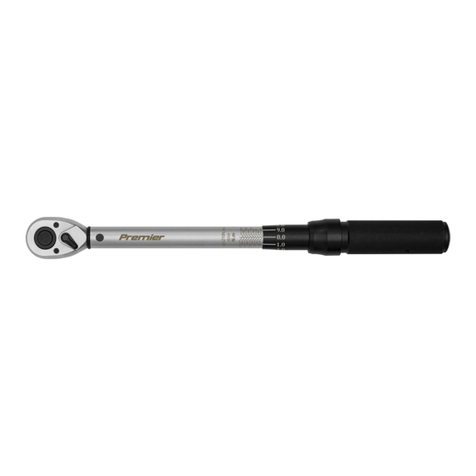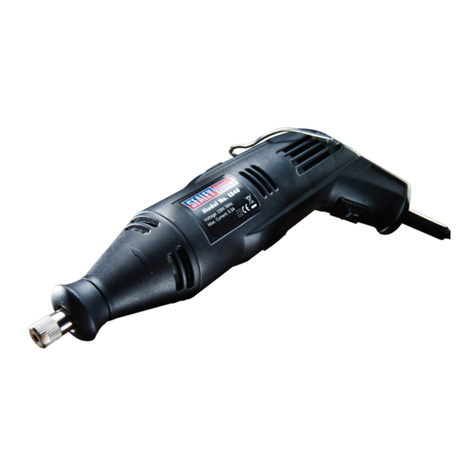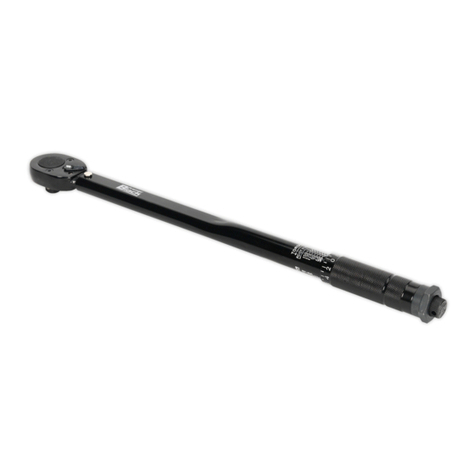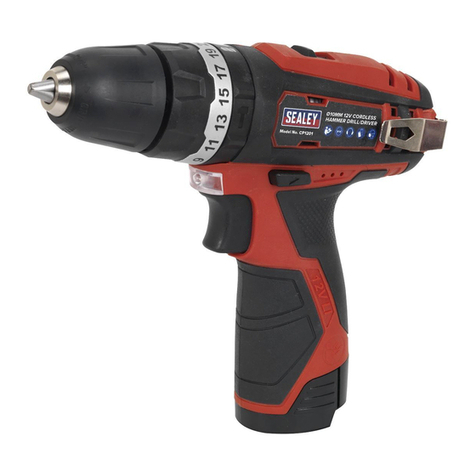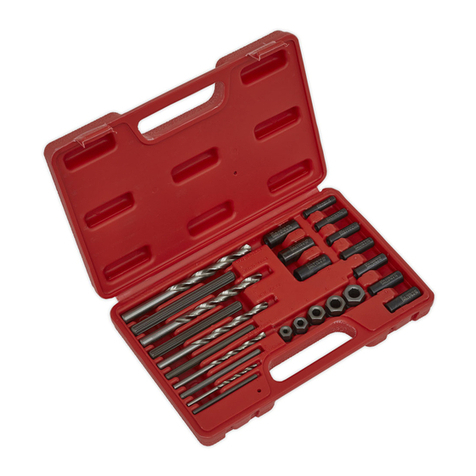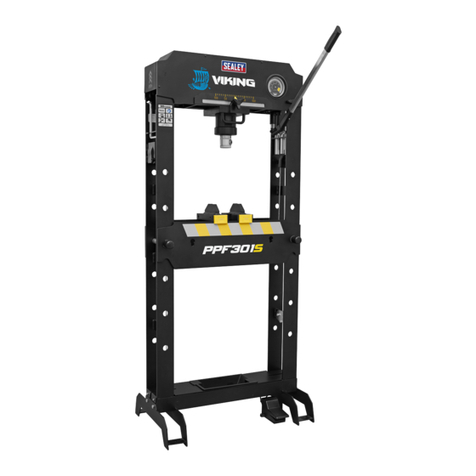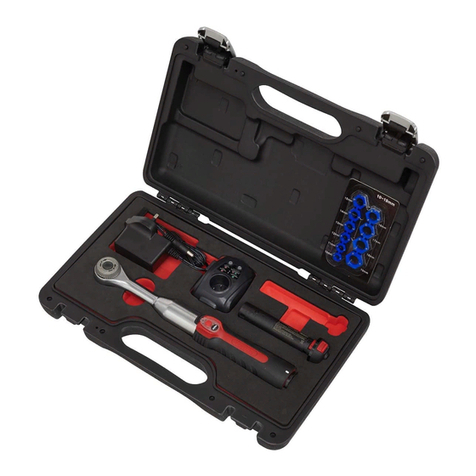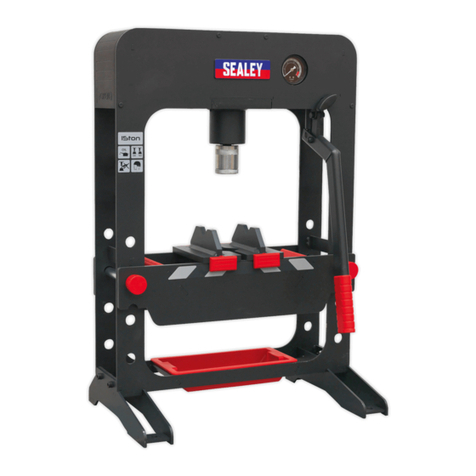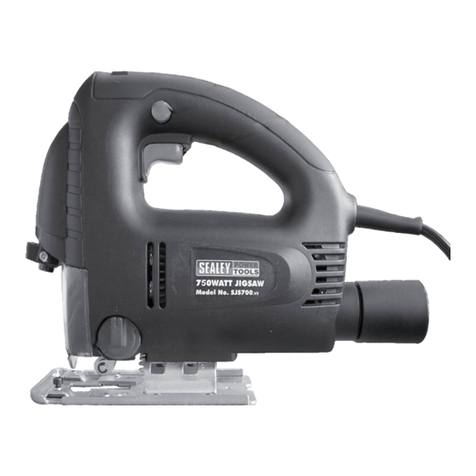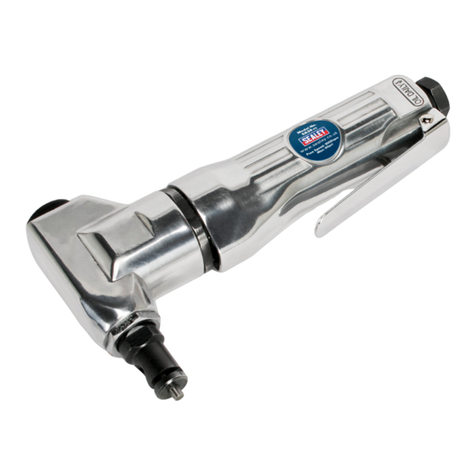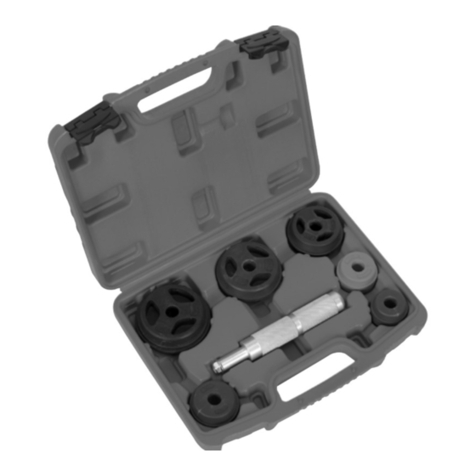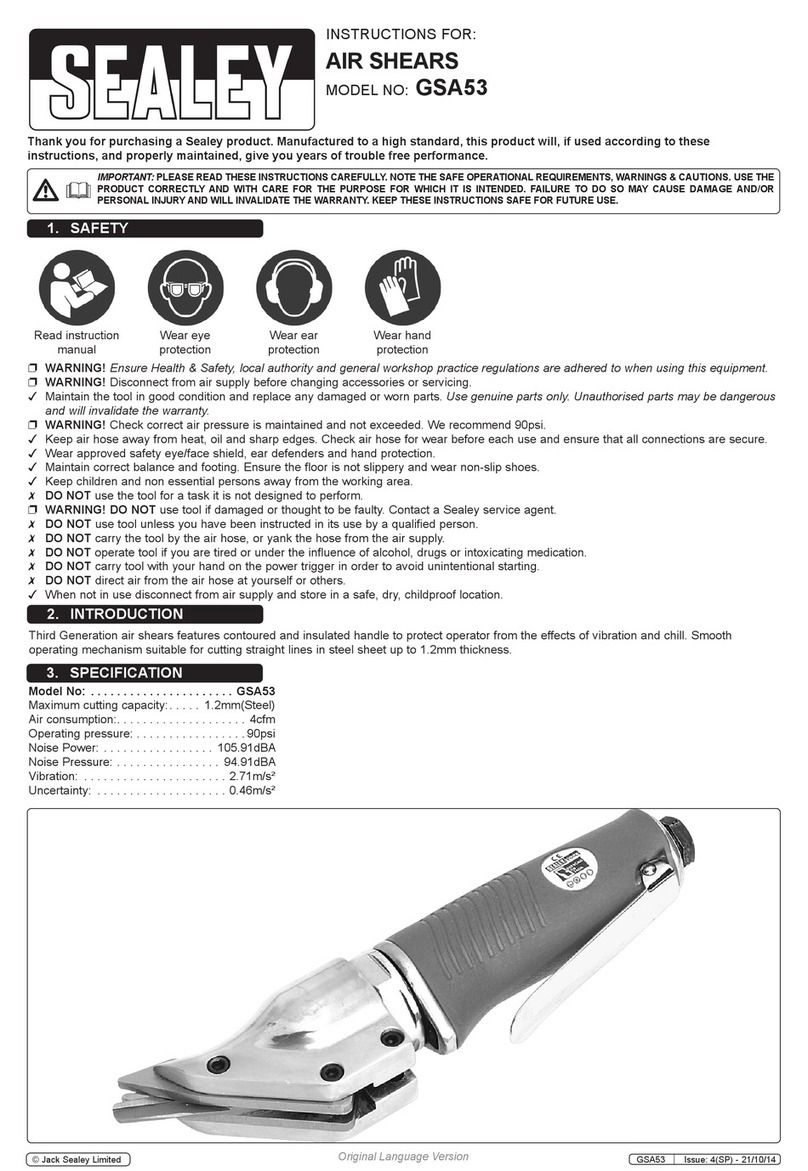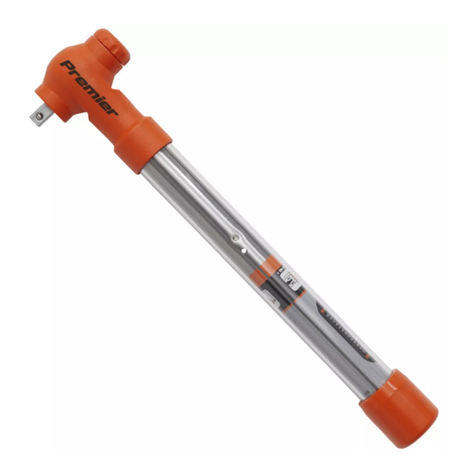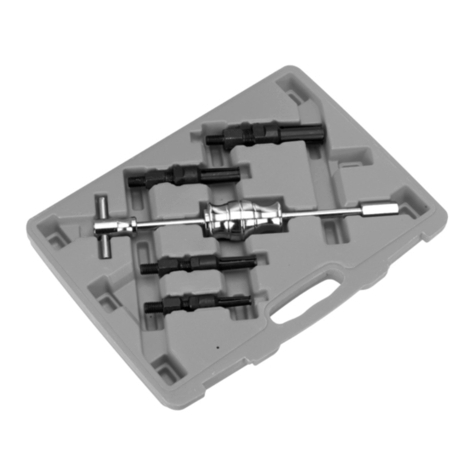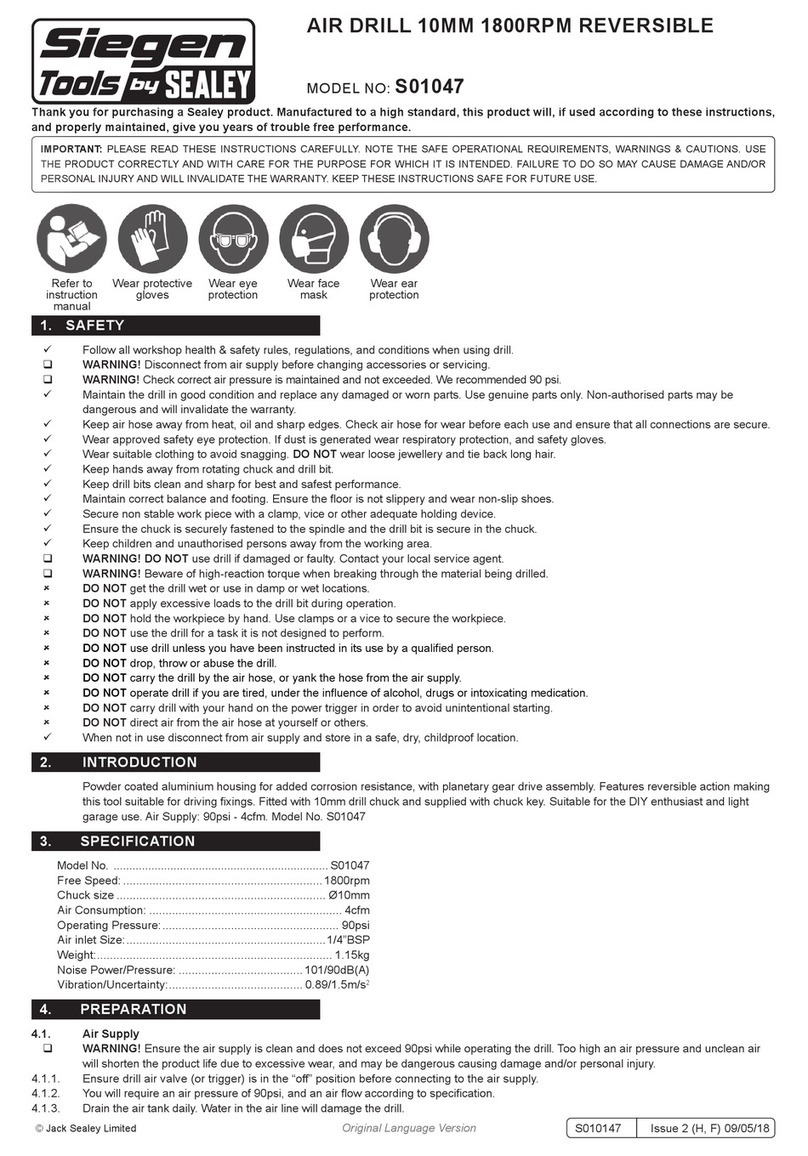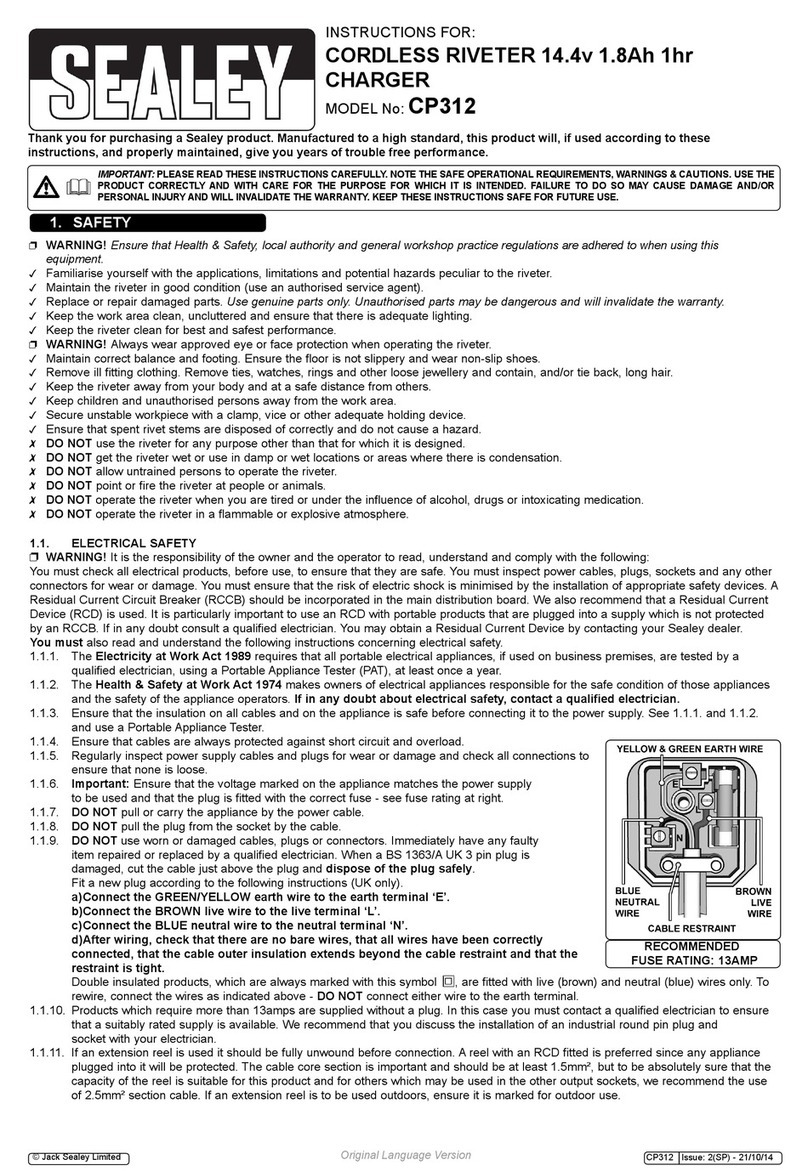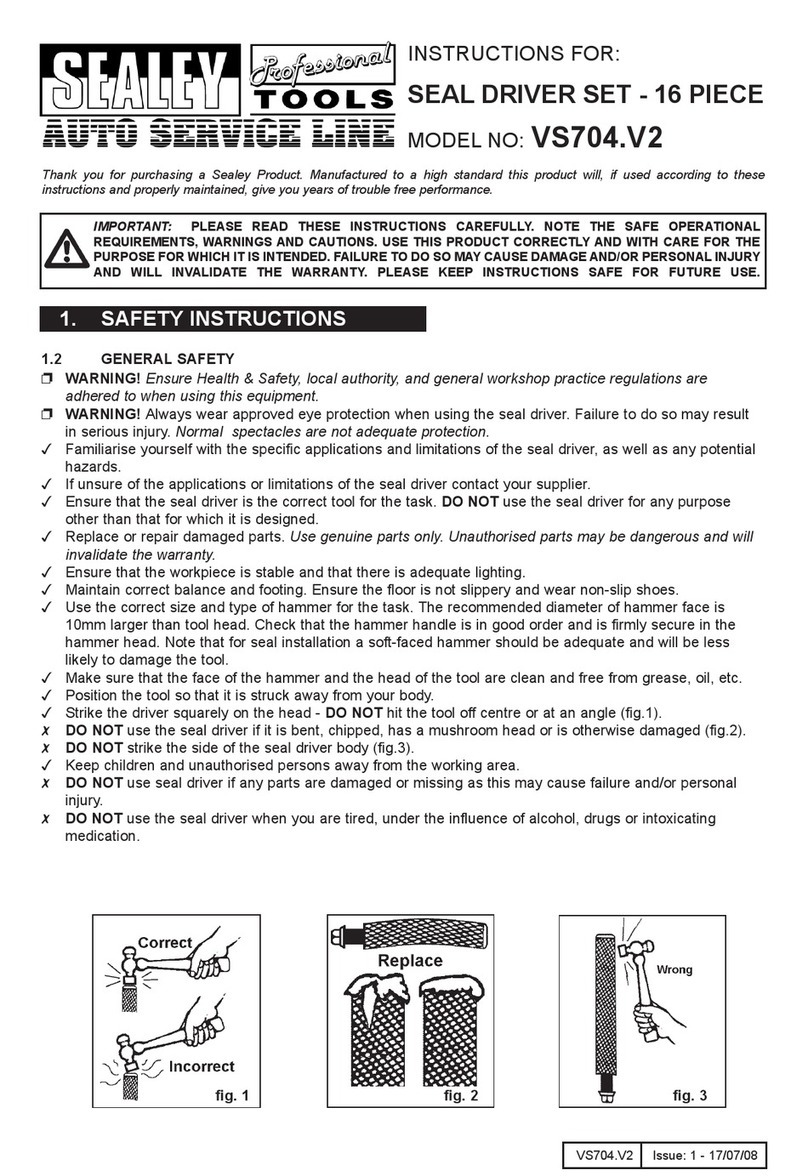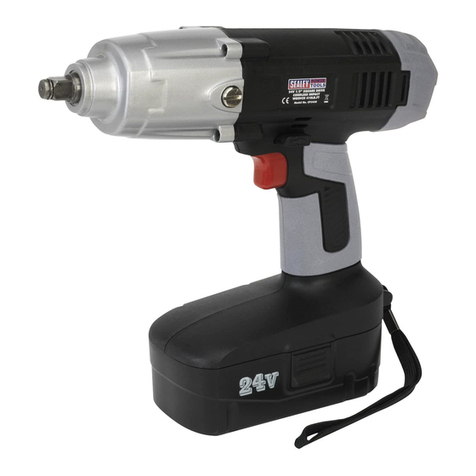
Thank you for purchasing a Sealey product. Manufactured to a high standard this product will, if used according to these instructions
and properly maintained, give you years of trouble free performance.
1. SAFETY INSTRUCTIONS
IMPORTANT: PLEASE READ THESE INSTRUCTIONS CAREFULLY. NOTE THE SAFE OPERATIONAL REQUIREMENTS, WARNINGS AND
CAUTIONS. USE THIS PRODUCT CORRECTLY AND WITH CARE FOR THE PURPOSE FOR WHICH IT IS INTENDED. FAILURE TO DO SO MAY
CAUSE DAMAGE AND/OR PERSONAL INJURY AND WILL INVALIDATE THE WARRANTY. PLEASE KEEP INSTRUCTIONS SAFE FOR FUTURE USE.
1.1. ELECTRICAL SAFETY. WARNING! It is the user’s responsibility to read, understand and comply with the following:
You must check all electrical equipment and appliances to ensure they are safe before using. You must inspect power supply leads, plugs and
all electrical connections for wear and damage. You must ensure the risk of electric shock is minimised by the installation of appropriate safety
devices. An RCCB (Residual Current Circuit Breaker) should be incorporated in the main distribution board. We also recommend that an RCD
(Residual Current Device) is used with all electrical products. It is particularly important to use an RCD with portable products that are plugged
into an electrical supply not protected by an RCCB. If in doubt consult a qualified electrician. You may obtain a Residual Current Device by
contacting your Sealey dealer. You must also read and understand the following instructions concerning electrical safety.
1.1.1. The Electricity At Work Act 1989 requires all portable electrical appliances, if used on business premises, to be tested by
a qualified electrician, using a Portable Appliance Tester (PAT), at least once a year.
1.1.2. The Health & Safety at Work Act 1974 makes owners of electrical appliances responsible for the safe condition of the appliance
and the safety of the appliance operator. If in doubt about electrical safety, contact a qualified electrician.
1.1.3. Ensure the insulation on all cables and the product itself is safe before connecting to the mains power
supply. See 1.1.1. & 1.1.2. above and use a Portable Appliance Tester (PAT).
1.1.4. Ensure that cables are always protected against short circuit and overload.
1.1.5. Regularly inspect power supply, leads, plugs for wear and damage and power connections to
ensure that none is loose.
1.1.6. Important: Ensure the voltage marked on the product is the same as the electrical power
supply to be used, and check that plugs are fitted with the correct capacity fuse. A 13 amp plug
may require a fuse smaller than 13 amps for certain products, see fuse rating at right.
1.1.7. DO NOT pull or carry the powered appliance by its power supply lead.
1.1.8. DO NOT pull power plugs from sockets by the power cable.
1.1.9. DO NOT use worn or damage leads, plugs or connections. Immediately replace or have repaired
by a qualified electrician. A U.K. 3 pin plug with ASTA/BS approval is fitted. In case of damage,
cut off and fit a new plug according to the following instructions (discard old plug safely).
(UK only - see diagram at right). Ensure the unit is correctly earthed via a three-pin plug.
a) Connect the GREEN/YELLOW earth wire to the earth terminal ‘E’.
b) Connect the BROWN live wire to live terminal ‘L’.
c) Connect the BLUE neutral wire to the neutral terminal ‘N’.
d) After wiring, check that there are no bare wires, that all wires have been correctly connected, that the cable outer
insulation extends beyond the cable restraint and that the restraint is tight.
Double insulated products are fitted with live (BROWN) and neutral (BLUE) wires only. Double insulated products are always marked
with this symbol . To re-wire, connect the brown & blue wires as indicated above. DO NOT connect the brown or blue to the
earth terminal.
1.1.10. Cable extension reels. When a cable extension reel is used it should be fully unwound before connection. A cable reel with an RCD
fitted is recommended since any product which is plugged into the cable reel will be protected. The section of the cores of the cable
is important and should be at least 1.5mm², but to be absolutely sure that the capacity of the cable reel is suitable for this product
and for others that may be used in the other output sockets, we recommend the use of 2.5mm² section cable.
Blue
Neutral
Wire
Yellow & Green
Earth Wire
Cable
Restraint
FUSE RATING
THIS PRODUCT MUST BE FITTED
WITH A
13 AMP FUSE
Brown
Live
Wire
1.3. GENERAL SAFETY
Disconnect the gun from the mains power and allow to cool before changing accessories, servicing or performing other maintenance.
Maintain the gun in good condition, use an authorised service agent.
Use recommended accessories only. Unapproved accessories can be hazardous and will invalidate your warranty.
Wear appropriate protective clothing and equipment. Work gloves and eye protection are mandatory. Protect long hair and remove
loose fitting garments and jewellery. Maintain correct balance and footing and wear non-slip shoes.
Evaluate the work area before using the gun. i.e. ceiling, floors and enclosures may contain flammable materials.
Keep the work area clean, uncluttered and well lit. Use the gun only in a well ventilated area.
Ensure that small or irregular shaped objects are secured in a vice or clamp working on them.
Stay alert! Always pay attention to the work in hand when operating this gun.
Guard against electric shock by not contacting grounded surfaces, i.e. pipes, radiators, etc. when using electric hand tools.
Keep the gun handle dry, clean and free from oil and grease. Clean any paint or varnish from the nozzle after use.
Allow the gun to cool before storing (only store when cold). Store in a safe, dry place out of the reach of children.
DO NOT direct the hot airflow at yourself, others, animals or plants and DO NOT allow children to operate the gun.
DO NOT use the gun in rain, in a wet environment, or in areas of high humidity and dampness (i.e. bathrooms, steam rooms, etc.).
DO NOT obstruct the hot airflow by blocking or covering the air outlet.
DO NOT touch the nozzle during, or after use, as it becomes extremely hot.
1.2. LEAD PAINT WARNING! Paint once contained lead as a traditional ingredient. Paint particles resulting from the removal of such
paint are toxic and ingestion or inhalation must, therefore, be avoided. The following action must be taken before using this tool:
1.2.1. User must determine potential hazard relating to age of paint to be removed (modern paints do not have lead content).
1.2.2. DANGER! Keep all persons and pets away from the work area. The following are particularly vulnerable to the effects of lead paint
dust: Expectant women, babies and children.
1.2.3. We recommend personal protection by using the following safety items: Paint Spray Respirator (Sealey ref. SSP1699), PE Coated
Hooded Coverall (Sealey ref. SSP267), Latex Gloves (Sealey ref. SSP24).
1.2.4. Take adequate measures to contain the paint dust, flakes, and scrapings.
1.2.5. When task is complete continue to wear safety equipment as in 1.2.3. and thoroughly clean all areas. Ensure paint waste is disposed
of in sealed bags or containers.
INSTRUCTIONS FOR:
HOT AIR GUN KIT
MODEL No: HS103K.V2
Original Language Version HS103K.V2 Issue: 1 - 13/07/10
